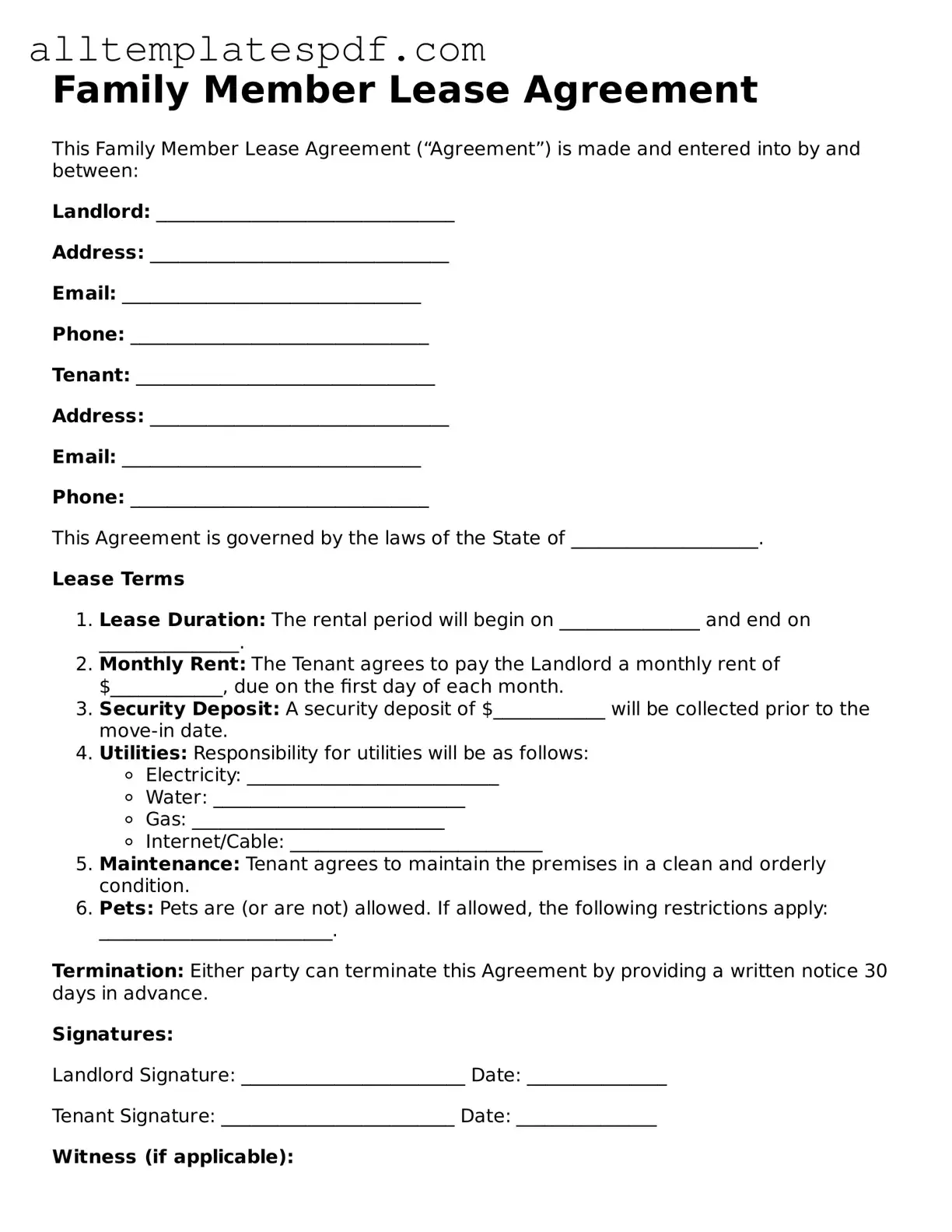Filling out a Family Member Lease Agreement can be a straightforward process, but many people make common mistakes that can lead to confusion or disputes later on. One frequent error is failing to include all necessary details about the property. It’s essential to specify the address, unit number, and any other relevant information clearly. Omitting these details can create misunderstandings about the rental terms and responsibilities.
Another mistake often seen is neglecting to outline the terms of the lease clearly. This includes the duration of the lease, rent amount, and payment due dates. Without this information, both parties may have different expectations, leading to potential conflicts. Clearly stating these terms helps to ensure that everyone is on the same page and understands their obligations.
Additionally, many individuals overlook the importance of signatures. A Family Member Lease Agreement is not legally binding without the signatures of both the landlord and the tenant. This step is crucial, as it signifies that both parties agree to the terms outlined in the document. Forgetting to sign can render the agreement invalid, which can lead to complications down the line.
Lastly, people sometimes forget to discuss and include any specific rules or conditions that apply to the rental situation. This could involve pet policies, maintenance responsibilities, or rules about guests. By failing to address these issues upfront, misunderstandings may arise, leading to tension between family members. Clear communication about expectations can help prevent these problems and foster a positive living environment.
